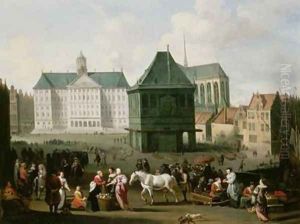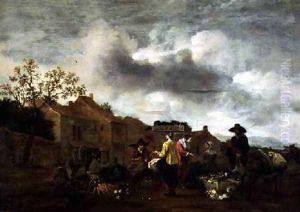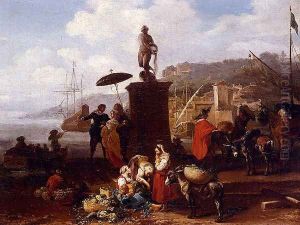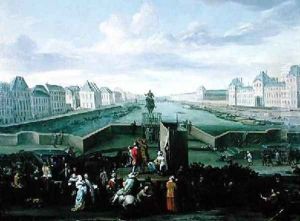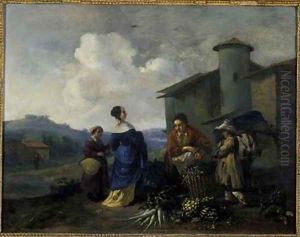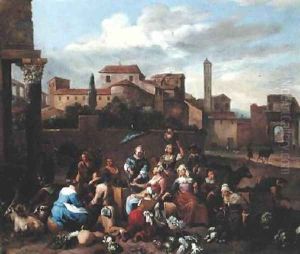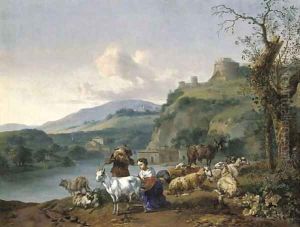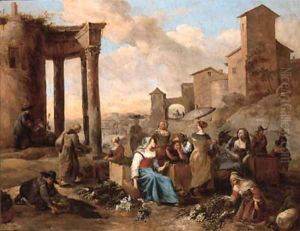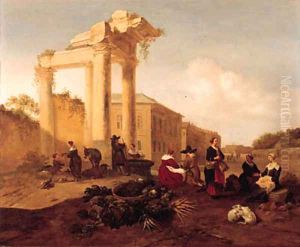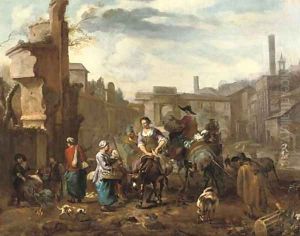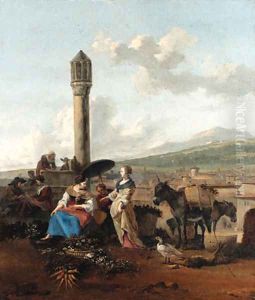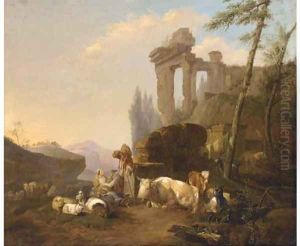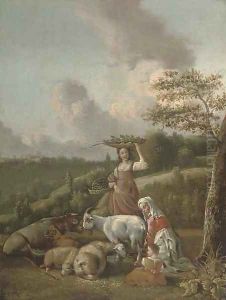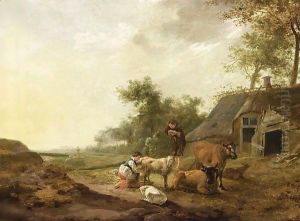Hendrik Mommers Paintings
Hendrik Mommers was a Dutch Golden Age painter, known for his contribution to the development of landscape and genre painting in the 17th century. Born in Haarlem, Netherlands, in 1623, Mommers initially emerged in an era dominated by the influence of prominent Dutch artists such as Frans Hals and later, the landscape giants like Jacob van Ruisdael. Despite the formidable competition, Mommers carved out his own niche, focusing on pastoral scenes, beach views, and interior genre scenes that reflect the everyday life of his time.
Mommers' early works are characterized by their meticulous attention to detail, vibrant use of color, and the ability to capture the serene beauty of the Dutch countryside. His landscapes often featured rustic scenes of shepherds with their flocks, idyllic villages, and calm waterways, which were executed with a remarkable sense of realism and atmospheric perspective. This focus on realism was in line with the Dutch Baroque period's emphasis on observation and the depiction of the natural and domestic world.
Throughout his career, Hendrik Mommers showed versatility by also engaging in genre painting, which depicted scenes of daily life. His interior scenes are noted for their intimate portrayal of domestic activities, offering insights into the customs and social dynamics of 17th-century Dutch society. These works are celebrated for their detailed portrayal of textures, from the rich fabrics of the subjects' clothing to the intricate interiors of Dutch homes.
Mommers spent most of his career in Amsterdam, where he was influenced by and interacted with other artists of the Dutch Golden Age. Despite not reaching the same level of fame as some of his contemporaries, his work was appreciated for its quality and contribution to the Dutch painting tradition. Mommers' paintings were sought after by collectors in his time and continue to be studied and admired for their beauty and historical value.
Hendrik Mommers passed away in 1693, leaving behind a legacy that, while not as widely recognized as that of some of his peers, represents an important facet of the Dutch Golden Age of painting. His works are preserved in various museums and collections around the world, where they continue to be appreciated for their contribution to the development of landscape and genre painting in the Netherlands.
